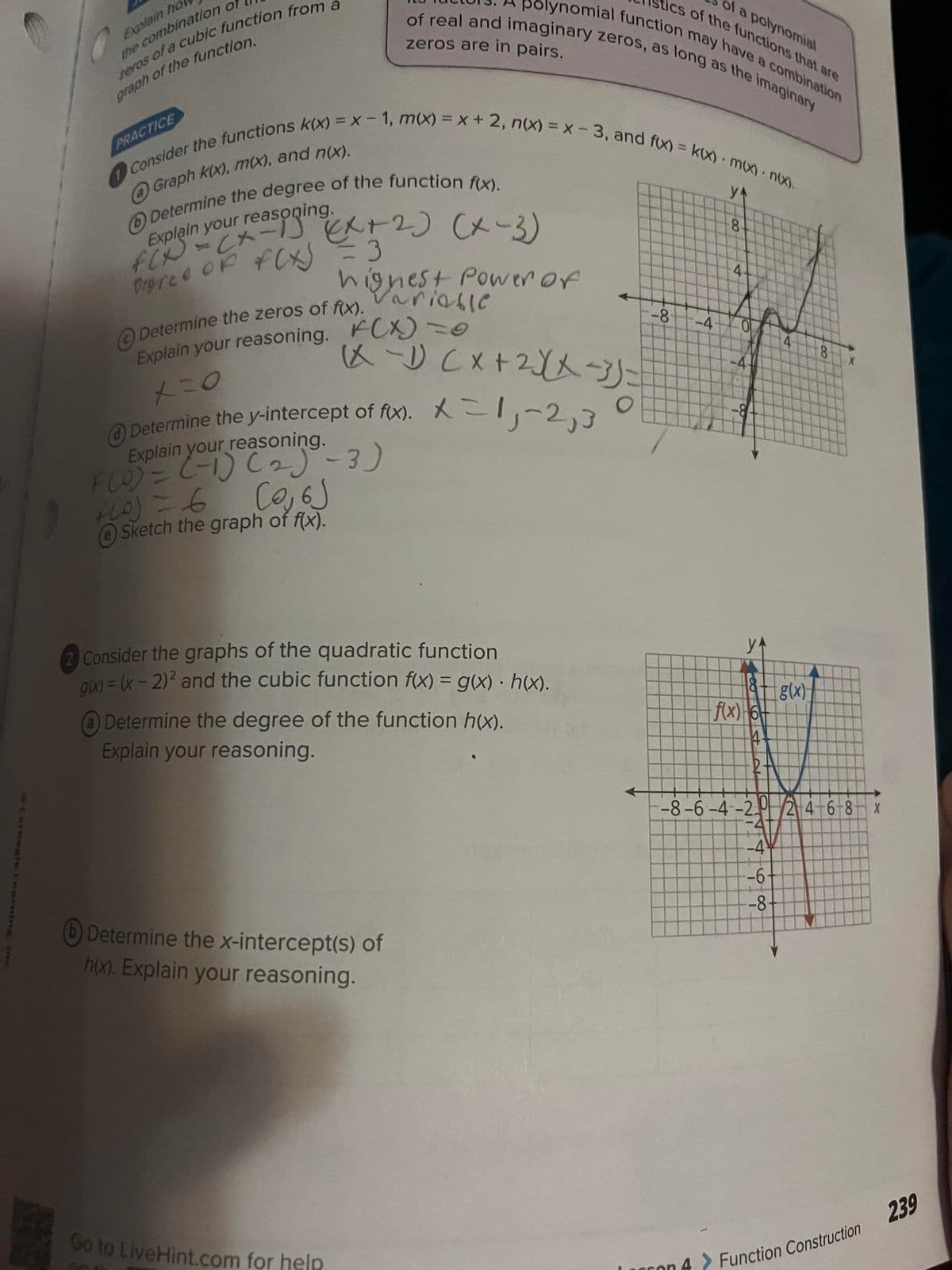Consider the functions k(x) = x-1, m(x) = x + 2, n(x) = x-3, and fix) = kx) m(x).n(x). Graph K(x), m(x), and n(x). PRACTICE Determine the degree of the function f(x). Explain your inyo (x-1) EX+2) (x-3) *Cx) = 3 = Drgree of highest Power of Variable Determine the zeros of f(x). Explain your reasoning. F(x)=0 x=0 (x-1) (x + 2)(x-3) = -8 -4 y 8 S
Consider the functions k(x) = x-1, m(x) = x + 2, n(x) = x-3, and fix) = kx) m(x).n(x). Graph K(x), m(x), and n(x). PRACTICE Determine the degree of the function f(x). Explain your inyo (x-1) EX+2) (x-3) *Cx) = 3 = Drgree of highest Power of Variable Determine the zeros of f(x). Explain your reasoning. F(x)=0 x=0 (x-1) (x + 2)(x-3) = -8 -4 y 8 S
Algebra & Trigonometry with Analytic Geometry
13th Edition
ISBN:9781133382119
Author:Swokowski
Publisher:Swokowski
Chapter3: Functions And Graphs
Section3.5: Graphs Of Functions
Problem 36E
Related questions
Question
please help with these practice questions thank you! This is a jpg image it was not linked from another site

Transcribed Image Text:Carnegie Learning. inc.
Explain ho
the combination of
eros of a cubic function from a
graph of the function.
Consider the functions k(x) = x-1, m(x) = x + 2, n(x) = x - 3, and f(x) = kx) m(x) • n(x).
y
@Graph k(x), m(x), and n(x).
PRACTICE
Determine the degree of the function f(x).
Explain your reasoning.
(x-3)
Degree of f(x) = 3
Determine the zeros of f(x).
Explain your reasoning. FCX) = 0
x=0
F(0) = (-1) (2)
+10) = 6
(0,6)
e Sketch the graph of f(x).
highest Power of
Variable
Determine the y-intercept of f(x).
Explain your reasoning.
ics of the functions that are
of a polynomial
polynomial function may have a combination
of real and imaginary zeros, as long as the imaginary
zeros are in pairs.
-
(x-1) (x + 2√(x-3)=
X = 1, -2,3
-3)
Go to Live Hint.com for help
Consider the graphs of the quadratic function
gix) = (x - 2)² and the cubic function f(x) = g(x) • h(x).
Determine the degree of the function h(x).
Explain your reasoning.
Determine the x-intercept(s) of
h(x). Explain your reasoning.
2
-8 -4
8
4
4
1
0.
f(x) 6
14
4
-4
-6-
-8-
g(x)
-8-6-4-20 2 4 6 8
8
Function Construction
X
239
Expert Solution
This question has been solved!
Explore an expertly crafted, step-by-step solution for a thorough understanding of key concepts.
This is a popular solution!
Trending now
This is a popular solution!
Step by step
Solved in 6 steps with 10 images

Recommended textbooks for you

Algebra & Trigonometry with Analytic Geometry
Algebra
ISBN:
9781133382119
Author:
Swokowski
Publisher:
Cengage


Algebra & Trigonometry with Analytic Geometry
Algebra
ISBN:
9781133382119
Author:
Swokowski
Publisher:
Cengage
